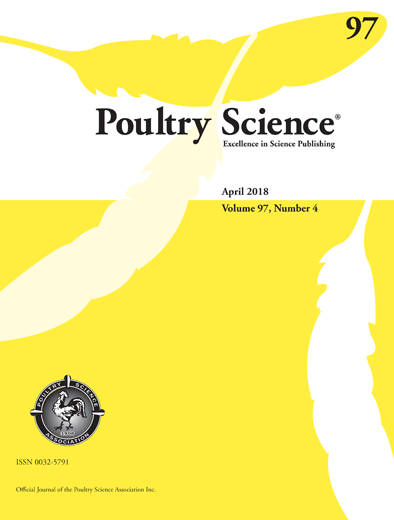Ver ítem
- xmlui.general.dspace_homeCentros Regionales y EEAsCentro Regional Buenos Aires SurEEA BalcarceArtículos científicosxmlui.ArtifactBrowser.ItemViewer.trail
- Inicio
- Centros Regionales y EEAs
- Centro Regional Buenos Aires Sur
- EEA Balcarce
- Artículos científicos
- Ver ítem
Meat quality traits in the Greater rhea (Rhea americana) as influenced by muscle, sex and age
Resumen
Meat from the Greater rhea (Rhea americana) could compete with traditional red meats, diversifying the market of protein products of animal origin. The meat from 32 rheas was used to study quality aspects and this included ultimate pH (pHu), color, water-holding capacity (WHC%), cooking loss (CL%)
and tenderness. The muscles sampled were the Gastrocnemius pars externa, Iliofibularis and Obturatorius medialis from both sexes at multiple ages (10, 12, 14,
[ver mas...]
Meat from the Greater rhea (Rhea americana) could compete with traditional red meats, diversifying the market of protein products of animal origin. The meat from 32 rheas was used to study quality aspects and this included ultimate pH (pHu), color, water-holding capacity (WHC%), cooking loss (CL%)
and tenderness. The muscles sampled were the Gastrocnemius pars externa, Iliofibularis and Obturatorius medialis from both sexes at multiple ages (10, 12, 14, 16 months). Age at slaughter affected WHC%, CL%, and color in raw meat and tenderness in cooked meat. Muscles under study showed differences in terms of
pHu, raw meat color, and tenderness of cooked meat. Sex did not have a significant effect on any of the variables studied. According to our results, rhea meat from younger animals, between 10 to 14 months old, was tender
and moderately juicy and the visual color was appreciated by the consumers.
[Cerrar]

Fuente
Poultry science : pey005. (February 2018)
Fecha
2018-02
ISSN
0032-5791
1525-3171 (Online)
1525-3171 (Online)
Formato
pdf
Tipo de documento
artículo
Palabras Claves
Derechos de acceso
Restringido
 Excepto donde se diga explicitamente, este item se publica bajo la siguiente descripción: Creative Commons Attribution-NonCommercial-ShareAlike 2.5 Unported (CC BY-NC-SA 2.5)
Excepto donde se diga explicitamente, este item se publica bajo la siguiente descripción: Creative Commons Attribution-NonCommercial-ShareAlike 2.5 Unported (CC BY-NC-SA 2.5)

